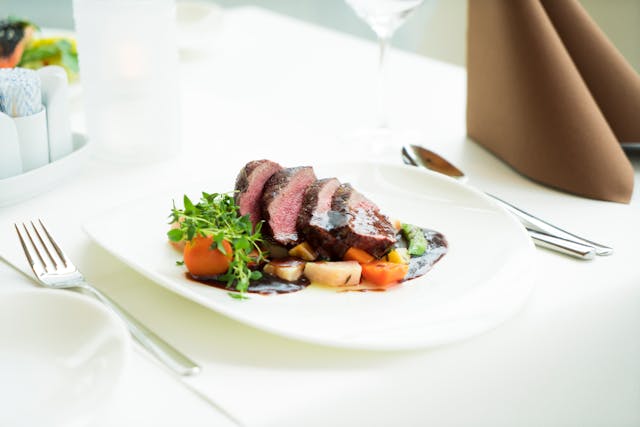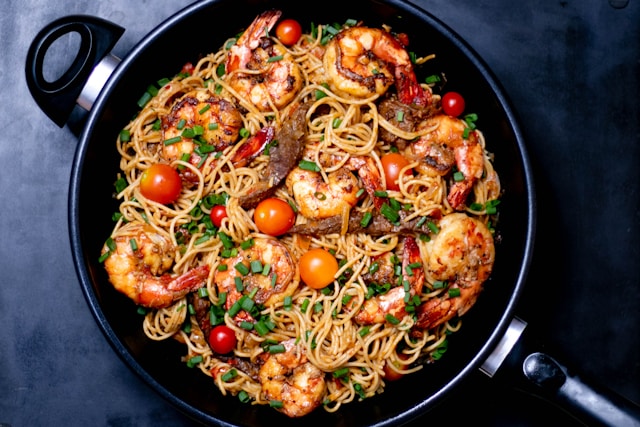
As the restaurant industry prepares for 2026, one trend is rising above the rest: authenticity is outshining the artificial. Diners are increasingly rejecting “fakeness” and instead rewarding operators that showcase real, simple, and culturally rooted ingredients.
The Decline of Ultra-Processed Plant-Based Options
Plant-based substitutes were once celebrated as the future of food. However, products that lean heavily on ultra-processed formulas are now facing consumer fatigue. Retail data indicate that sales of plant-based meat and seafood declined by approximately 7% in 2024, while conventional meat sales increased by around 4% (SPINS/Good Food Institute).
Restaurants see the same pattern. U.S. consumer trend data suggest a rising demand for protein. According to Technomic’s 2025 outlook, 45% of consumers report increasing beef consumption to add more protein to their diets (Restaurant Business, citing Technomic).

Why Authenticity Matters Now
For consumers, authenticity means trust. Today’s guests want meals that connect with their identity, lifestyle, and cultural values. That desire plays out in several ways:
- Transparency: Guests reward restaurants that provide clear sourcing, minimal processing, and honesty about what’s in their food.
- Craftsmanship: Diners are gravitating toward menus that showcase skill, such as scratch cooking, heritage recipes, or premium cuts of meat.
- Cultural Connection: Restaurants that celebrate regional traditions or globally authentic flavors build stronger emotional connections with their guests.
This consumer mindset isn’t just preference—it’s purchasing power. In 2023, U.S. retail sales of plant-based meat fell 12% in units and 7% in dollars, while conventional meat sales grew by about 4%. The contrast highlights how value and familiarity continue to prevail over novelty.
Research-Backed Insights on Authenticity
Studies confirm that diners use multiple cues to evaluate authenticity, including flavor, ingredient transparency, cultural context, and even the story a restaurant tells. One analysis of restaurant reviews found that descriptors tied to place, ethnicity, and sensory authenticity consistently appeared in positive evaluations (culturalanalytics.org). Another study has shown that authenticity strongly correlates with trust, perceived value, and intent to revisit (tandfonline.com).
The bottom line: authenticity is not just a menu strategy; it’s a key driver of loyalty.
Real-World Examples of Authenticity in Action
- Sweetgreen adds steak to its menu. The fast-casual salad brand introduced caramelized garlic steak in 2024—its first red meat option. In its Boston test, steak appeared in nearly one in five dinner orders, showing how even health-forward brands must respond to demand for real protein (Business Insider).
- Grill’d (Australia) leans into premium sourcing. The burger chain promotes grass-fed beef, free-range lamb, and RSPCA-approved chicken to reinforce its “real ingredients” positioning (Wikipedia).
- St John (London) revives nose-to-tail dining.
- Fergus Henderson’s legendary London restaurant brought authenticity to the forefront with whole-animal cooking, offal, and heritage cuts—creating a culinary philosophy rooted in honesty and craft (The Guardian).
These examples show how diverse concepts—from fast casual to fine dining—are embracing authenticity to meet evolving consumer expectations.
Opportunities for Operators
For restaurants, this shift opens the door to new strategies:
1. Heritage Proteins: Highlight premium meats, such as grass-fed beef, heritage pork, or free-range poultry.
2. Regional Recipes: Showcase dishes rooted in cultural or local tradition, such as authentic barbecue, Italian braises, or coastal seafood specialties.
3. Local Sourcing: Partner with nearby farms and fisheries to create “close to home” menus that reinforce trust.
4. Balanced Plant Options: Rather than relying on imitation meats, spotlight whole vegetables, grains, and legumes in dishes that feel fresh and genuine.
5. Storytelling: Menus and digital platforms should tell the story of the ingredients and the people behind them.

Beyond Ingredients: Experience as Authenticity
Authenticity isn’t just what’s on the plate—it’s also about how it’s presented. From décor inspired by regional traditions to staff sharing the backstory of dishes, every touchpoint can reinforce a sense of the “real.” Operators who view authenticity holistically—encompassing food, story, and experience—will be well-positioned to thrive as this trend accelerates.
Looking Ahead
As 2026 approaches, authenticity is more than a buzzword—it’s a competitive advantage. Restaurants that emphasize transparency, tradition, and craftsmanship will stand out in a crowded market. The message is clear: it’s not about choosing between meat and plants, but about offering food that feels real, rooted, and crafted with care.
For restaurant operators, embracing authenticity can lead to stronger guest loyalty, increased repeat visits, and the ability to weather shifting consumer trends. The artificial may fade, but authenticity has staying power.
.png)





.png)





